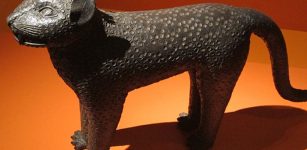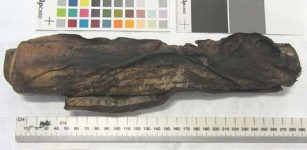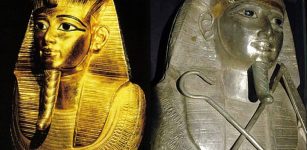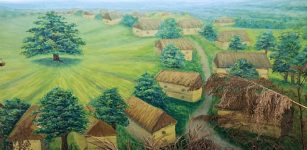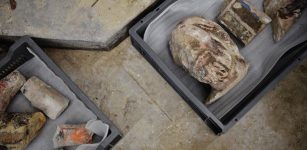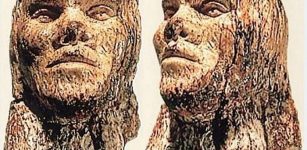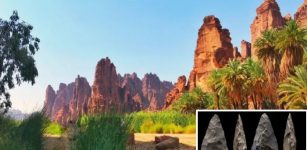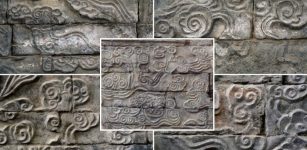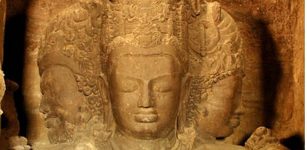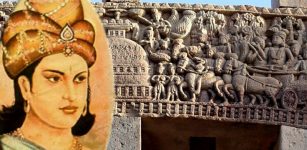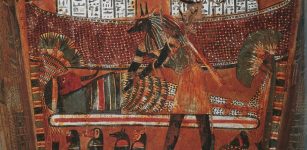Fascinating Ancient Legend Of Jason And His Argonauts Was Based On A Real Expedition To An Ancient Kingdom
AncientPages.com - Have you ever heard the fascinating ancient Greek legend about Jason and his Argonauts? This is a remarkable ancient story that scientists have now confirmed to have been based on true events!
Jason was an ancient Greek mythological hero who was famous for his role as the leader of the Argonauts and their quest for the Golden Fleece. He was the son of Aeson, the rightful king of Iolcos. He was married to the sorceress Medea.
One day when Jason entered Iolcus (modern-day city of Volos), he was announced as a man wearing one sandal. Jason, knowing that he was the rightful king, told Pelias that. Pelias replied by said, “To take my throne, which you shall, you must go on a quest to find the Golden Fleece.” Jason happily accepted the quest.
This was the beginning of a long adventurous journey. Jason assembled a great group of heroes, known as the Argonauts after their ship, the Argo. The group of heroes included the Boreads (sons of Boreas, the North Wind) who could fly, Heracles, Philoctetes, Peleus, Telamon, Orpheus, Castor and Pollux, Atalanta, and Euphemus.
The first stop of the Argonauts is the Greek Isle of Lemnos, populated only by women. Unknown to Jason and his crew, the women have murdered their husbands. After Lemnos the Argonauts landed among the Doliones, whose king Cyzicus treated them graciously. He told them about the land beyond Bear Mountain, but forgot to mention what lived there.

‘Jason takes the Fleece’. Detail from Athenian red-figure clay vase, about 470-460 BC. Credit: © Metropolitan Museum of Art
What lived in the land beyond Bear Mountain were the Gegeines which are a tribe of Earthborn giants with six arms and wore leather loincloths.
After many more adventures, the Argo passes Constantinople, heading for the Straits of Bosphorus.
The Straits of Bosphorus are a narrow passageway of water between the Sea of Marmara, the Aegean Sea and the Black Sea. To the ancient Greeks, this was the edge of the known world.
When Jason finally arrives in Colchis he asks King Aietes to return the golden fleece to him as it belonged to his ancestor.
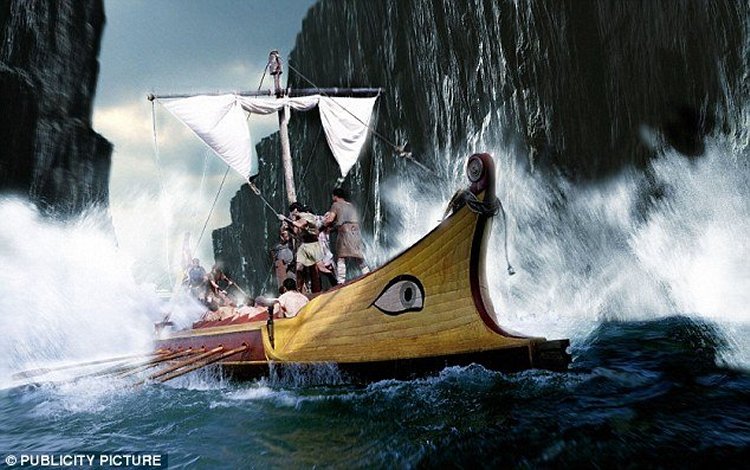
According to Greek mythology Jason and the Argonauts sailed in their ship the Argo from Greece to the Kingdom of Colchis in search of the Golden Fleece as part of a quest to help Jason win the throne of Iolcus
Reluctant, the king suggests yet another series of challenges to Jason. He must yoke fire-breathing bulls, plough and sow a field with dragons’ teeth and then overcome the warriors who will rise from the furrows. Aietes is confident the tasks are impossible but unbeknownst to the king, his daughter Medea has taken a liking to Jason. She offers to assist Jason if he will marry her. He agrees. Medea is a powerful sorceress and Jason is successful.
Jason and Medea return to Greece where Jason claims his father’s throne, but their success is short-lived.
Uncomfortable with Medea’s magic, the locals drive Medea and Jason out of Iolkos. They go into exile in Corinth where the king offers Jason his daughter in marriage. He agrees and so violates his vow to the gods to be true only to Medea. Furious, Medea kills the woman, kills Medea and Jason’s children and then ascends to Mount Olympus where she eventually marries Achilles. Jason goes back to Iolkos where his boat the Argo is on display.

Among artifacts found in villages of Svaneti, northwest Georgia was a bronze sculpture of a bird with a ram’s head that researchers say lends support that the myth of the golden fleece originated in the area
Among artifacts found in villages of Svaneti, northwest Georgia was a bronze sculpture of a bird with a ram’s head that researchers say lends support that the myth of the golden fleece originated in the area[/caption]
One day, while he sits next to the boat weeping, the decaying beam of his ship the Argo falls off and hits him on the head, killing him outright.
Daily Mail reports that “geologists have uncovered evidence that a mountainous area of Svaneti in what is now northwest Georgia was the country ‘rich of gold’ described in the legend.
They claim that villagers that were part of the wealthy Kingdom of Colchis, which existed from the sixth to the first centuries BC, used sheepskin to capture gold from mountain streams in the area.
The fleece was used to line the bottom of the sandy stream beds, trapping any tiny grains of gold that built up there. The technique is a variation on panning used elsewhere in the world.
This, they say, would have lead to sheepskins that were imprinted with flakes of gold and could have given rise to stories of a golden fleece.
Historic artifacts, including a bronze sculpture of a bird with a ram’s head, that were found in the villages of Svaneti also lend support that the kingdom was the source of the myth.
Dr Avtandil Okrostsvaridze, a geologist from the institute of earth sciences at the Ilia State University, Georgia, said the story of Jason and his Argonauts quest to find the Golden Fleece may have been a real event to learn about the sheepskin gold mining technique.
He said: ‘The phenomena of the “Golden Fleece”, according to our research, is connected with the sheepskin technique of recovering placer gold (gold that has built up in sand deposits).
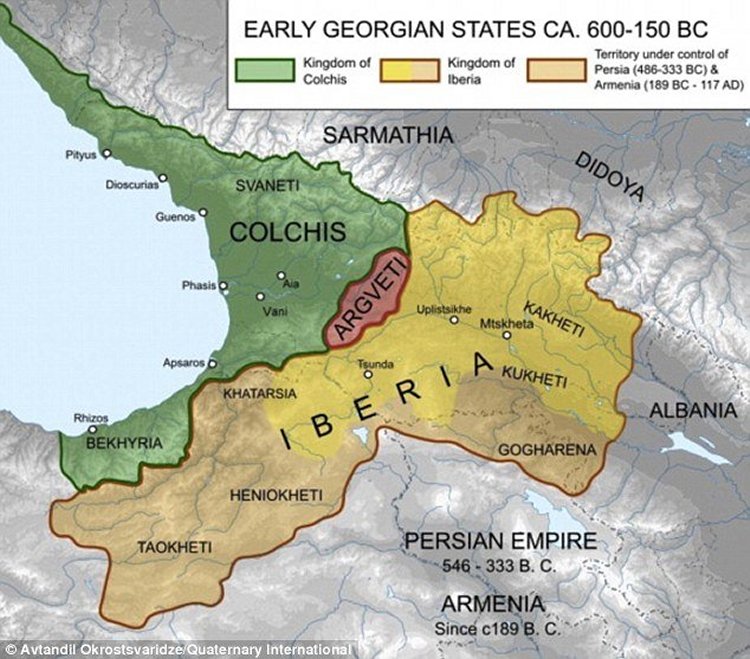
The Kingdom of Colchis was a wealthy area in what is now modern Georgia where according to Greek mythology King Aeëtes hung the Golden Fleece until it was seized by Jason and the Argonauts
The Kingdom of Colchis was a wealthy area in what is now modern Georgia where according to Greek mythology King Aeëtes hung the Golden Fleece until it was seized by Jason and the Argonauts[/caption]
‘The end result of this technique of gold recovery river gravels was a gold imprinted sheepskin, giving rise to the romantic and unidentified phenomena of the “Golden Fleece” in the civilized world.
‘We think, from our investigations, that the bedrock and placer gold contents of this region give grounds to believe that there was enough gold in this region to describe Svaneti as “the country rich of this noble metal”.
See also:
Did The Ancient Trojan Horse Really Exist?
Legendary Furies – Angry And Monstrous Women Of The Underworld
‘We share the viewpoint of the Roman historian Apian Alexandrine and suppose that the myth about expedition of Argonauts in quest of the “Golden Fleece” to the Colchis Kingdom was a real event and that the main purpose of this mission was to obtain gold and sheepskin technique of gold mining.’
Dr Okrostsvaridze and colleagues from the Ivane Javakhishvili Tbilisi State University in Georgia, conducted a widespread survey of gold deposits in the Svaneti region.
They report in the journal Quaternary International that they used remote sensing and analysed more than 1,000 rock and gravel samples to assess the gold content in the area.
They found that placer gold, where nuggets and flakes sink to the bottom of a stream bed, were extensively exposed throughout the time of the Kingdom of Colchis.
Although the Kingdom of Colchis was named in the legend of Jason and his Argonauts as the place where they stole the Golden Fleece, the exact location has always been disputed.

A unique golden lion sculpture from the beginning of the second millennium BC is thought to show the sophisticated skill at obtaining and casting metal around the time when the Golden Fleece myth began.
Some ancient sources, and modern academics, have said it could have belonged to the Vani people of Colchis, whose territory was in the middle of the kingdom, but others have predicted it was the Svans who lived in the mountainous north.
They used remote sensing and analysed more than 1,000 rock and gravel samples to assess the gold content in the area.
They found that placer gold, where nuggets and flakes sink to the bottom of a stream bed, were extensively exposed throughout the time of the Kingdom of Colchis.
See also:
Ancient Greeks Regret Inventing The Theater – But Why?
Goddesses Of Fate And Destiny In Greek, Roman And Slavic Mythology
Mythical Stymphalian Birds: Terrible Winged Maidens With Birds’ Feet
Although the Kingdom of Colchis was named in the legend of Jason and his Argonauts as the place where they stole the Golden Fleece, the exact location has always been disputed.
Some ancient sources, and modern academics, have said it could have belonged to the Vani people of Colchis, whose territory was in the middle of the kingdom, but others have predicted it was the Svans who lived in the mountainous north.
Dr Okrostsvaridze, however, points to golden artifacts found in the villages around Svaneti as evidence that they had sophisticated mining and meteorological skills.
These include a unique golden lion sculpture that has been dated back to the second millennium BC.
He said: ‘This shows that gold mining and its artistic processing was at a very high level, very early in the history of the old Georgian kingdoms.
‘Our work shows that the gold content in the rivers sands of this region are sufficiently large to give grounds for the creation of legends.’ Svaneti sits beneath the main ridge of the Greater Caucusus mountains in northwest Georgia where streams still run rich with gold deposits according to the analysis by geologists
Geological surveys by Dr Okrostsvaridze and his team reveal that gold deposits in many areas that were historically mined have been replenished as streams have continued to wash them down the mountainsides.
Indeed, he said that some locals still use traditional techniques to obtain gold from the rivers in the area and it may even be possible for modern day Argonauts to find a golden fleece of their own today.
He said: ‘Our work has confirmed that Svaneti is a region, uniquely, where the locals still wash gold from alluvial placers through modern domestic, wooden vessels or pans with holes in the bottom and unto a sheepskin or fleece which collects the fine particulate gold.’
AncientPages.com


